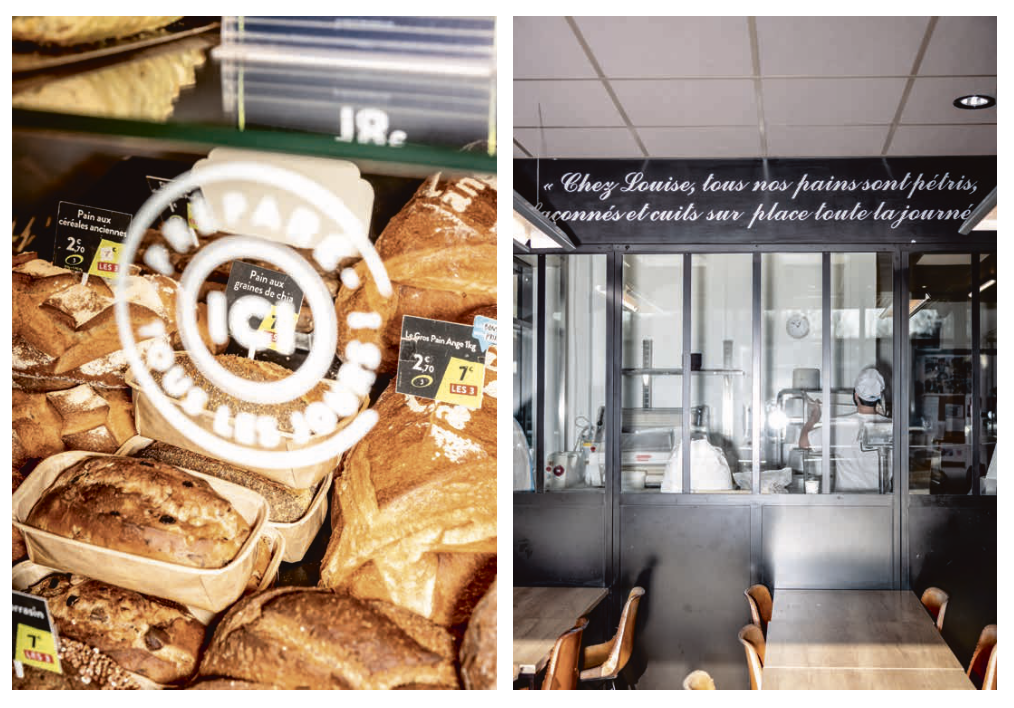BIG FOUR
The Giants of BVP.
Marie Blachère, Ange, Louise, and Feuillette represent the magic square of French chain bakery, viennoiserie, and pastry. Analysis.
The Giants of BVP.
Marie Blachère, Ange, Louise, and Feuillette represent the magic square of French chain bakery, viennoiserie, and pastry. Analysis.
The BVP market is rich in lessons, but also in strong and prosperous brands that emerged in the mid-2000s, often conceived by families with baking expertise who aimed for great things: visible brands, spacious interiors, extensive product ranges, bread (almost) at all hours with a choice of baking methods, where demand reigns supreme. These bakeries then evolved into groups and eventually giants in chain bakery. Leading the pack is Marie Blachère with its 769 outlets, followed by Ange, Louise, and Feuillette, which has been crafting its story from Lorraine to Loir-et-Cher. For almost twenty years, this Big Four has continued to achieve success around major and medium-sized cities in France, deploying substantial resources to fully grasp the bakery market.
Stances
The storefront of a Marie Blachère location is wide and simple, alternating between pink and black. There are numerous parking spaces, and soon there will be charging stations for electric cars. This understated approach shelters the success of the group founded by Bernard Blachère in 2004. In ten years, the company employs over 3,500 people. Expanded through franchising since 2016, Marie Blachère shows no signs of slowing down in its expansion.

The original intention was to see bakeries emerge on the outskirts of large cities. Today, the group stands at the top with 769 locations in 2023, and a revenue of around 880 million euros. The group can indeed justify its real agility in the bread retail landscape.
With over 30,000 artisan bakers in the country, Marie Blachère continues its rise, providing residents of the suburbs not only with bread but with a rich bakery offering, attentive to evolving consumption habits by offering baguettes baked to their preference.
Ange, the number two with 250 locations, has developed spaces known for their understated design where bread is transformed on-site, supported by a revenue exceeding 350 million euros.
Agile, from the pandemic to inflation
These four giants use the same recipe (or almost) to win over their customers: anticipating demand, understanding customer expectations, and most importantly, staying ahead of the economic landscape of the food service industry. Whether it’s Marie Blachère or Feuillette, all have understood that customers expect exceptional consistency in bread production: they want to find it almost any time, made with full transparency, both in terms of appearance (airy labs, visible cash registers) and the source of ingredients. The bread, shaped and baked on-site, must have the immutable taste echoed in every slogan on their websites, 'the taste of good bread.' This notion of bread has grown thanks to genuine demand: it’s essential to offer inexpensive bread accessible to all households. Inflation, which has affected all food groups, has had a similar impact on the prices of baguettes from these groups, who have increasingly introduced loyalty programs and advantageous offers. This economic agility has proven effective, especially coming out of the pandemic.

In 2019, more than 16 million baguettes were sold daily in France (source: Fiducial). But French consumers are no longer limited to just bread, and the bakery offering has expanded to include snacking and fast food. This shift has been evident since the lockdowns: French habits have changed. Beyond meals, a true premium 'customer service' profile has emerged.Maison Feuillette capitalizes on this by offering a genuine tea room space, blurring the lines of the suburban bakery concept. Bakeries have changed their modus operandi for some. They are digitalizing, including the digitalization of loyalty processes. Click and collect, chatbots, and map searches cater to all audiences and budgets, ensuring consistency in merchandise sales, which has also significantly expanded since the pandemic. For reference, snacking has represented 35% of bakery revenue in France since 2019. French customers can now sit down in their bakery if the offering allows, and even more if desired: pizza, sandwiches, pastries, or even burgers.
By Hannah Benayoun
Photos Renaud Bouchez